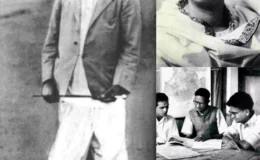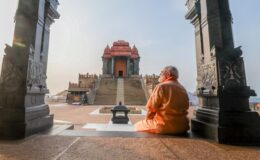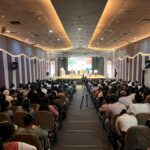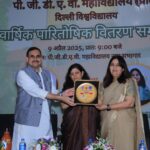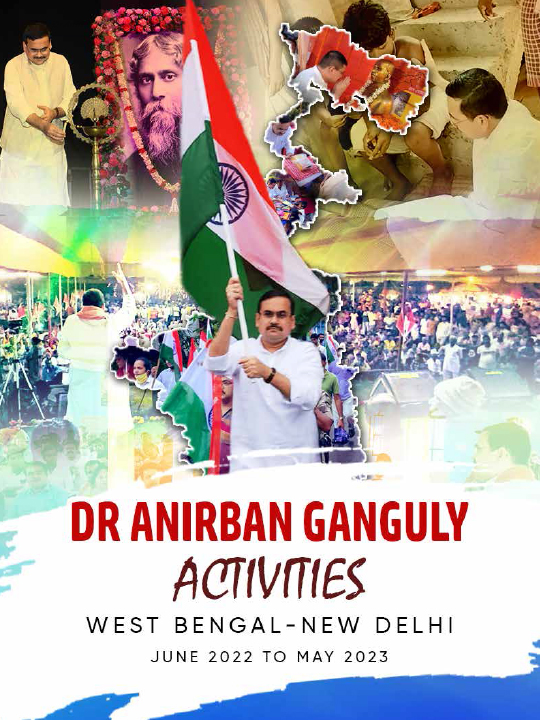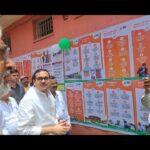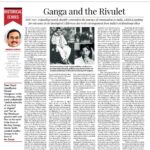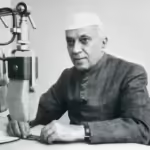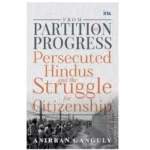Indic Thought Inspiring Great Minds Holds Many Lessons
- By : Anirban Ganguly
- Category : Articles
Seven-odd decades ago when the first atomic bomb was exploded in Los Alamos, Robert Oppenheimer, the diehard physicist who led the project, was struck by what he saw. What dominated Oppenheimer’s mind that point of time when one of the most decisive moments of human history unfolded by was not a mathematical formula but the verse from the Bhagavad Gita, which said, “Divi soorya-sahasrasya bhaved yugapad utthitaa yadi bhaah sadrshi saa syaad, bhaasas tasya mah’aatmanaah! Kaalo’smi loka-kshaya-krt pravrddho lokaan samaahartum iha pravrttah (what brilliance there would have been if a thousand suns were to blaze forth all of a sudden in the sky. To that was comparable the splendour of that great Being).”
Oppenheimer recalled later, with great emotion, how the verse from the “Hindu scripture” flashed before him, “We knew the world would not be the same. A few people laughed, a few people cried. Most people were silent. I
remembered the line from the Hindu scripture, the Bhagavad Gita; Vishnu is trying to persuade the Prince that
he should do his duty, and to impress him, takes on his multi-armed form and says, ‘Now I am become Death, the destroyer of worlds.’ I suppose we all thought that, one way or another.”
An entire battery of physicists whose researches altered the course of history, Robert Oppenheimer, Niels Bohr— who had famously observed that “I go into the Upanishads to ask questions—Werner Heisenberg, who had observed how “quantum theory will not look ridiculous to people who have read Vedanta”, along with Erwin Schrödinger formed part of that group, which regularly and seriously delved into the depths of Indic thought and philosophy to derive direction or to be further convinced of the line of their scientific quest.
Heisenberg revealed in an interview to that other profound scholar of Eastern mysticism and modern physics, Fritjof Capra, that “while he was working on quantum theory, he went to India to lecture and was a guest of Rabindranath Tagore. Capra talked a lot with Tagore about Indian philosophy. “Heisenberg told me,” he recalled, “that these talks had helped him a lot with his work in physics, because they showed him that all these new ideas in quantum physics were in fact not all that crazy.”
Capra, in the introduction to his opus The Tao of Physics, for example, discusses a deeply personal spiritual experience, which revealed to him—a physicist by training and predilection—the cosmic Dance of Shiva, “I knew also that the earth’s atmosphere was continually bombarded by showers of ‘cosmic rays’, particles of high energy undergoing multiple collisions as they penetrated the air. All this was familiar to me from my research in high-energy physics, but until that moment I had only experience through graphs, diagrams and mathematical theories. As I sat on that bench, my former experiences came to life; I ‘saw’ cascades of energy coming down from outer space, in which particles were created and destroyed in rhythmic pulses; I ‘saw’ that atoms of the elements and those of my body participating in this cosmic dance of energy; I felt its rhythm and I ‘heard’ its sound, and at that moment I knew that this was the Dance of Shiva, the Lord of Dancers worshipped by the Hindus.”
Capra and the epochal minds who preceded him never shied away from exploring the links between philosophy, mysticism, languages, scriptures, sciences and mathematics. They sustained themselves on the continuous energy that they derived from sources of Indic thought. Wouldn’t they laugh at the facile and false controversy raging in India, on Sanskrit, IITs, science and mathematics?
Too often we forget how civilisational India inspired great minds across the globe.

